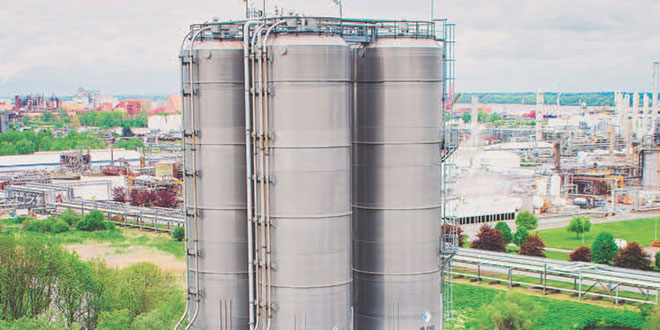Green Chemistry Is a Marathon
The industry is under pressure to finally become cleaner. Trinseo, an American company, is particularly ambitious when it comes to sustainability goals.
By MICHAEL KNAUER, Automobilwoche.
MUNICH. One of the largest producers of harmful greenhouse gasses is the chemical industry. Next to the steel and cement industry, it is one of the largest CO2 producers in the world. That’s why it’s essential for the automobile industry, as a major buyer of chemical products, to also move their chemical suppliers towards gradual defossilization.
The problem has been recognized, but the road to transformation is long. “At BASF, climate protection is at the top of the agenda, and we have set ambitious goals for ourselves: By 2030, we want to reduce our greenhouse gas emissions by 25% compared to 2018,” says BASF manager Martin Brudermüller. By 2050, the global market leader in the chemistry industry strives for net-zero emissions. Green power, recycling, better infrastructure – the branch must address all areas to reach these goals.

One company that has particularly ambitious goals is the American specialty chemicals supplier Trinseo. It operates production locations throughout Europe, including Germany, and supplies numerous customers in the automobile industry. “Trinseo is a pioneer in many technologies for sustainable chemistry,” said Chief Technology Officer Han Hendriks in an interview with Automobilwoche.
In 2020, Trinseo’s leadership team adopted a long list of sustainability goals which was observed throughout the industry. The primary goal is the reduction of greenhouse gases by 2035 of 35% compared to 2019. According to Hendriks, one advantage for a rather small chemistry company is the ability to change faster. “We are not the biggest in the industry and we’ve only been around for 13 years. But that is an advantage during times of transformation. We have the agility and the mobility of a start-up. The reporting channels are short and thus the decision processes are as well.”
“We are often asked how can we continue as we are – but with producing 50% less CO2?”
Han Hendriks, Trinseo Chief Technology Officer
Away from dreck
Studies have shown that chemical companies are one of the biggest contributors to global warming. Consequently, there is great pressure on the industry. In a study of the Swiss Asset Manager Globalance Invest of 2021, the industrial gas producer Linde gets particularly bad scores (“high heating potential”). To be sure, with the hydrogen division the company has an innovative technology in its portfolio. However, it is said that Linde has to move away from the energy-intensive production of gases. In the meantime, the sustainability theme has gained speed at Linde.
The car manufacturers demand clean production. Hendriks: “We are often asked how can we continue as we are – but with producing 50% less CO2?” For example, Trinseo recently started a pilot plant in the Netherlands for the recycling of polymers.

In addition to the sustainable production, it is the products themselves which should ensure more climate protection. However, BASF decided to create battery materials at an early stage, that were used in electric cars.
Clear strategies needed
Meanwhile, chemical companies like Trinseo also have CSOs: Francesca Reverberi is member of the Board and bears the title Chief Sustainability Officer. Since September 2021, she coordinates the complex sustainability strategy. Reverberi has launched Trinseo’s own “Sustainability Business and Services Team” which has developed a roadmap for the coming years. The team has four central tasks:
- Establishment of a more sustainable production
- Development of sustainable products
- Reversal at the raw material suppliers in the sense of greater sustainability
- Adjustment of the HR department in view of health, diversity, and inclusivity
“Those are a lot of challenging projects. It is a marathon,” says development manager Hendriks.
By the way, the pressure on the industry also has another cause. Hendriks: “Given the price trend in the energy sector, we see a tail wind to clearly position ourselves more sustainably.”
Originally published in German by the German automotive newspaper Automobilwoche.

